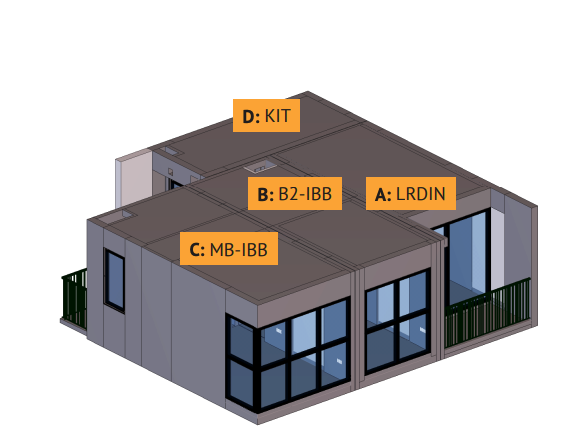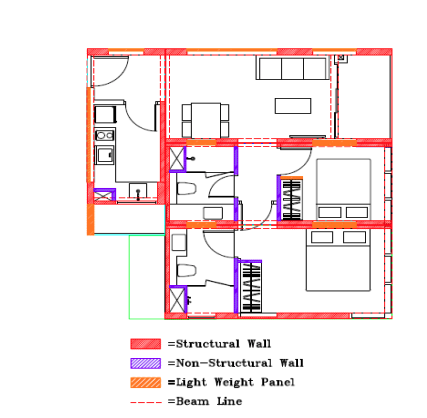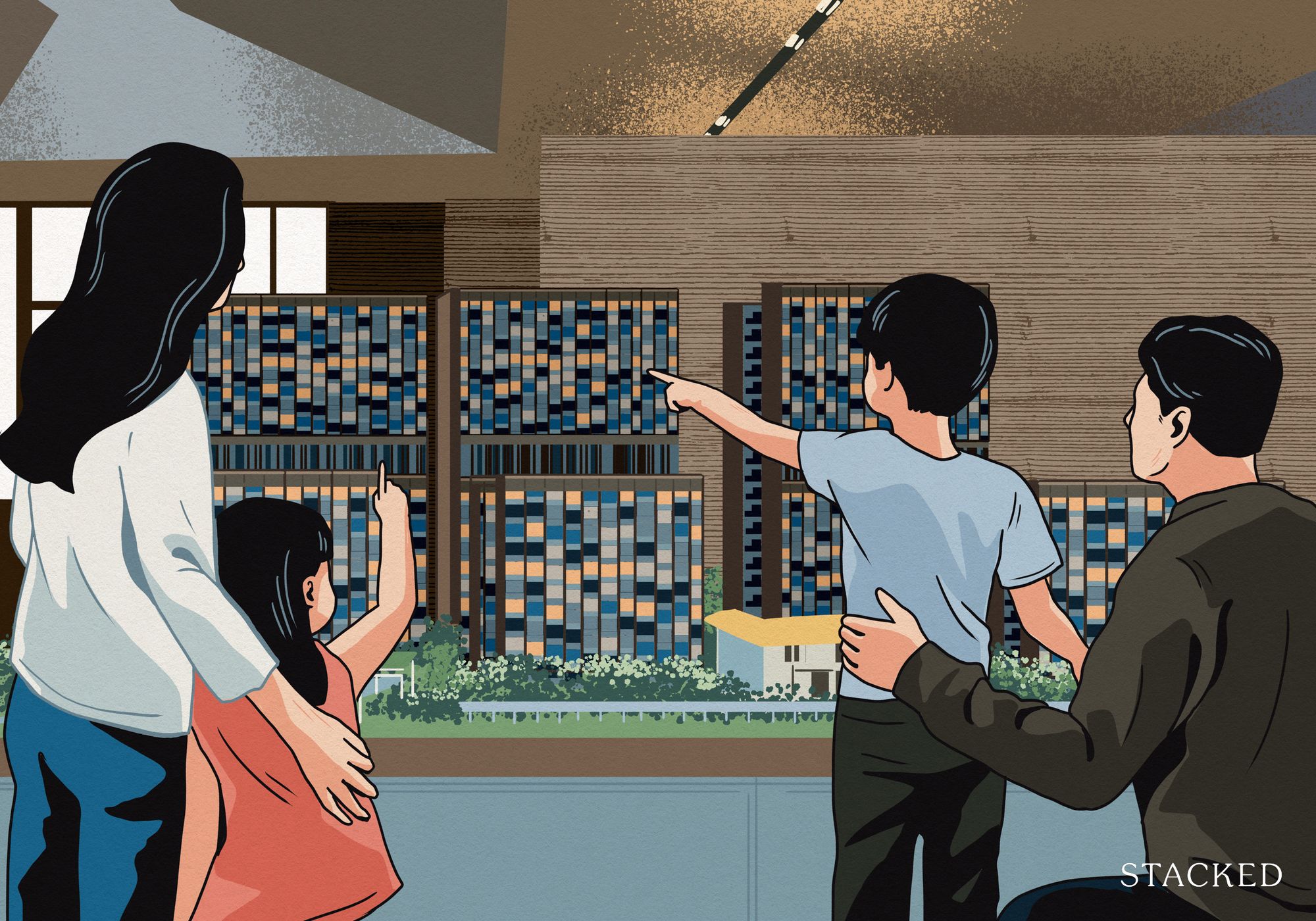PPVC Construction : Why It Matters For Investors (The Good, Bad, And Ugly)

Get The Property Insights Serious Buyers Read First: Join 50,000+ readers who rely on our weekly breakdowns of Singapore’s property market.
Let’s roll back time to the year 2017.
You are a savvy property investor, and have realised that the property market has bottomed out.
So you believe it is now the right time to start buying your investment property.
You’ve been to multiple new launch showflats – it’s quiet – just the way you like it.
Be greedy when others are fearful – you know the drill.
You’ve narrowed it down to 2 candidates for potential rentability in the future.
Clement Canopy at Clementi, and Forest Woods at Serangoon.
It’s a toss up between the 2, how do you really decide? Clement Canopy will be an attractive rental play (NUS and the like). Plus, you’ve always liked UOL projects for its landscaping.
That said, the distance to the MRT could be a concern.
Forest Woods is no slouch either in the developer department – CDL is one of the most well known in Singapore. It is closer to an MRT station too – Serangoon MRT (Circle and North East line).
So on that note, you decide to go for Forest Woods.
Sounds sensible, right?
Now, let’s see how that decision has played out in 2021.
| Clement Canopy | Forest Woods | |
| TOP | March 2019 | Nov 2020 |
| Purchase Price | $949,000 | $908,000 |
| Size | 657 | 667 |
| Rental | ||
| Monthly Rent | $2,800 | $2,800 |
| June 2019 | $33,600 | – |
| June 2020 | $22,400 | First rental transaction commenced in Feb 2021* |
| Total Gross Rental Income | $56,000 | $5,600 |
Capital appreciation aside, it’s clear to see that as of today, Clement Canopy would have been the smarter choice if rental income was your priority.
It all boils down to the additional time that you would have gained in rental income.
Despite Forest Woods being launched earlier during end 2016, Clement Canopy comes out on top because it was built faster and completed nearly a year quicker than Forest Woods.

So is it just a coin flip as to which developments would be completed faster?
Well, not quite. If you haven’t heard already, let me introduce you to today’s topic – buying a PPVC condo.
Given that it is now “launch season” of the 2019 GLS sites (where majority were required to be built by PPVC), it seems as good a time as any to talk about it.
PPVC actually stands for Prefabricated Prefinished Volumetric Construction.
In simple terms, this means assembling modular shoe-box like structures to make a building.

These modules have side openings, where if assembled side-by-side, will make up the doorways and corridors – which eventually form your unit layout.
As always, there are pros and cons to such a way of construction, so let me go through with you the good, the bad, and the ugly of PPVC construction.
The Good – Faster completion and better quality
Like I mentioned in the introduction, the biggest benefit of buying a PPVC condo is its shorter construction period.
Because the modules are made in a factory-like setting production is much faster and less affected by site logistics or space constraints.
You can see this in current sites like Midtown Modern or Stirling Residences, for example.

So aside from quick construction, another plus point is that it does have a positive effect on the build quality.
With the controlled nature of PPVC construction, the odds of defects are much lower as the installation of finishes and cabinets are all done under a controlled setting in a factory.
More from Stacked
Why More Singaporeans May Soon Trade Condos For Resale HDBs
We may be setting the property market up for a wave of downsizing into the resale flat segment.
Contrast this to a tight dim working space in a traditional construction setting and you can quite easily see the advantages.
Now, as much as I’ve glorified PPVC construction so far, it is always prudent to give a balanced viewpoint – so let me now talk about the bad and the ugly.
The Bad – Shorter ceiling height and limited room sizes
You’ve probably heard a common criticism of new launch condos in Singapore today.
They all look the same.
Well, in some sense that could be due to the introduction of PPVC in Singapore.

Typically, PPVC units have a 2.75m ceiling height and 2.8m room width.
In contrast, conventionally built condos can afford higher ceiling heights ranging from 2.9m to 3.3m and are not limited in room widths.
So this means you are able to get more flexible layouts with traditional construction.
To give you some context, the restriction in size all boils down to limitations in transporting the modules.
In compliance with traffic regulations, transporting trucks must be shorter than 4.5m to be allowed on public roads without police escorts.
The room ceiling height is therefore what remains after subtracting the truck platform height and the module’s floor or ceiling slab thickness.
As for room widths – it is limited to a maximum vehicular width of 3m minus wall thickness.
So does this mean you cannot have high ceilings anymore?
Well, while PPVC is increasingly a GLS requirement, developers can still build via the conventional methods up to a limited percentage.
So not all unit types will have to be subjected to the constraints.
Developers can essentially allocate these areas to larger unit types to raise the ceiling to 2.85m, or perhaps even more for units with strata voids.
The Ugly – Limited renovation options
With conventionally built units, you can allow for hacking of walls to some extent.

This gives you the freedom to edit unit layouts to suit different lifestyles – either by resizing or even combining rooms.
Which leads me to another hindrance – the walls of PPVC units are not hackable due to its structural nature.
Personally, it isn’t a dealbreaker – but you can see where the limitations lie more clearly when it comes to the PPVC method.
With all said and done…
As with most things in life, there are definitely pros and cons to the PPVC method of construction.
Given the modular nature, PPVC condo units will often have efficient layouts – regular shaped rooms that are large enough for a queen sized bed.
In comparison, conventionally built condos can sometimes end up with odd-shaped layouts and unusable spaces due to a small site or poor design planning.
Both of which you would rarely come across in a PPVC condo.
But, given the “set” construction method of a PPVC condo, you can say that there might be limitations to the overall uniqueness of a home.
As always, there are many considerations to choose from when it comes to buying a property. Deciding to go for a PPVC condo or a traditionally built one should not be the be all and end all to make your decision – but just one that you need to know especially where timelines are concerned.
If you’d like to get in touch for a more in-depth consultation, you can do so here.
Sean Goh
Sean has a writing experience of 3 years and is currently with Stacked Homes focused on general property research, helping to pen articles focused on condos. In his free time, he enjoys photography and coffee tasting.Read next from Property Market Commentary

Property Market Commentary Why The Singapore Property Market Will Be Different In 2026 — And It’s Not Just About Prices

Property Market Commentary 2025 Year-End Review Of The Singapore Property Market: What The Numbers Reveal

Property Market Commentary How The HDB Resale Market Performed In 2025, And What It Means For 2026 Prices

Property Market Commentary 4 Key Trends Reshaping Singapore’s New Launch Condo Market In 2026
Latest Posts

Singapore Property News HDB Resale Prices Finally Slowed in 2025 — Will It Continue in 2026?

Singapore Property News Breaking News: District 23 Condo Sells Out In Under Two Years At $2,120 Psf Average

On The Market Here Are The Cheapest 3-Bedroom Condos in Central Singapore You Can Still Buy From $1.15M

Pro This 21-Year-Old Condo Didn’t Sell Out Initially, Yet Became A Top Performer

Editor's Pick What I Only Learned After My First Year Of Homeownership In Singapore

Singapore Property News Why More Land Doesn’t Automatically Fix Housing In Singapore

On The Market Here Are The Cheapest 4-Room HDB Flats in Central Singapore You Can Still Buy From $490K

Editor's Pick Should We Buy An Old 99-Year Leasehold Condo To Live In: Will It’s Value Fall When The Lease Runs Out?

Pro How A Once “Ulu” Condo Launched In 1997 Became A Top Performer

Editor's Pick I Reviewed A New Launch 4-Bedroom Penthouse At Beauty World

Editor's Pick Why Singaporean Families Are Looking At This Landed Enclave From Around $4M

Singapore Property News Lentor’s First Condo Is Complete — The Early Profits May Surprise You

Property Advice We Own A $800K 1-Bedder And A $1.1M 3-Bedder: Is It Possible To Upgrade To A 4-Bedder Condo?

On The Market These Are Some Of The Cheapest 5-Room HDB Flats Left In Central Singapore

Pro This 698-Unit Ang Mo Kio Condo Launched At The Wrong Time — And Still Outperformed Peers



